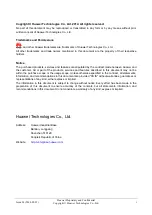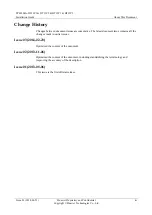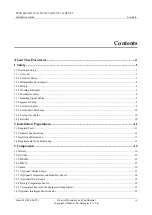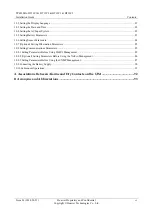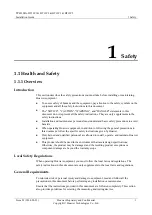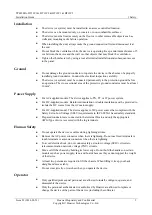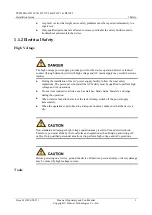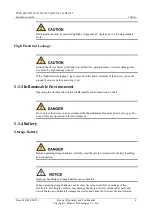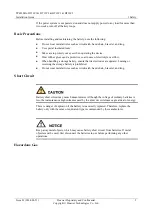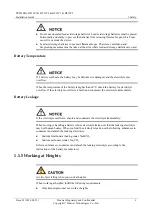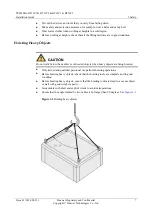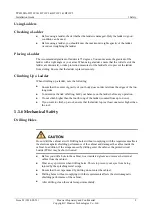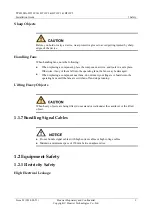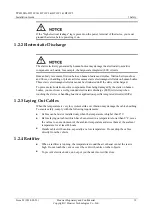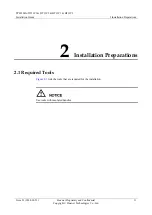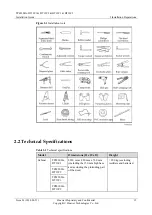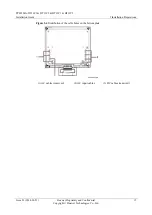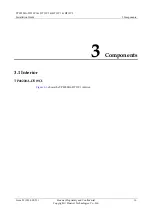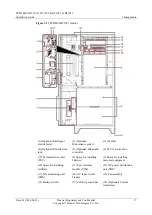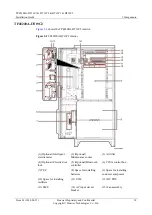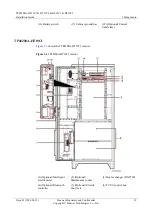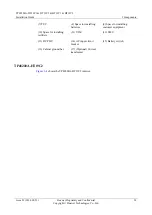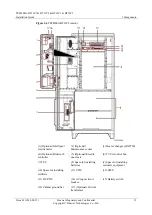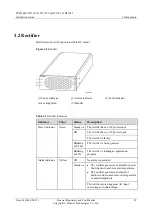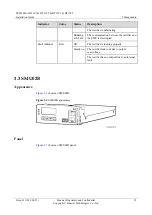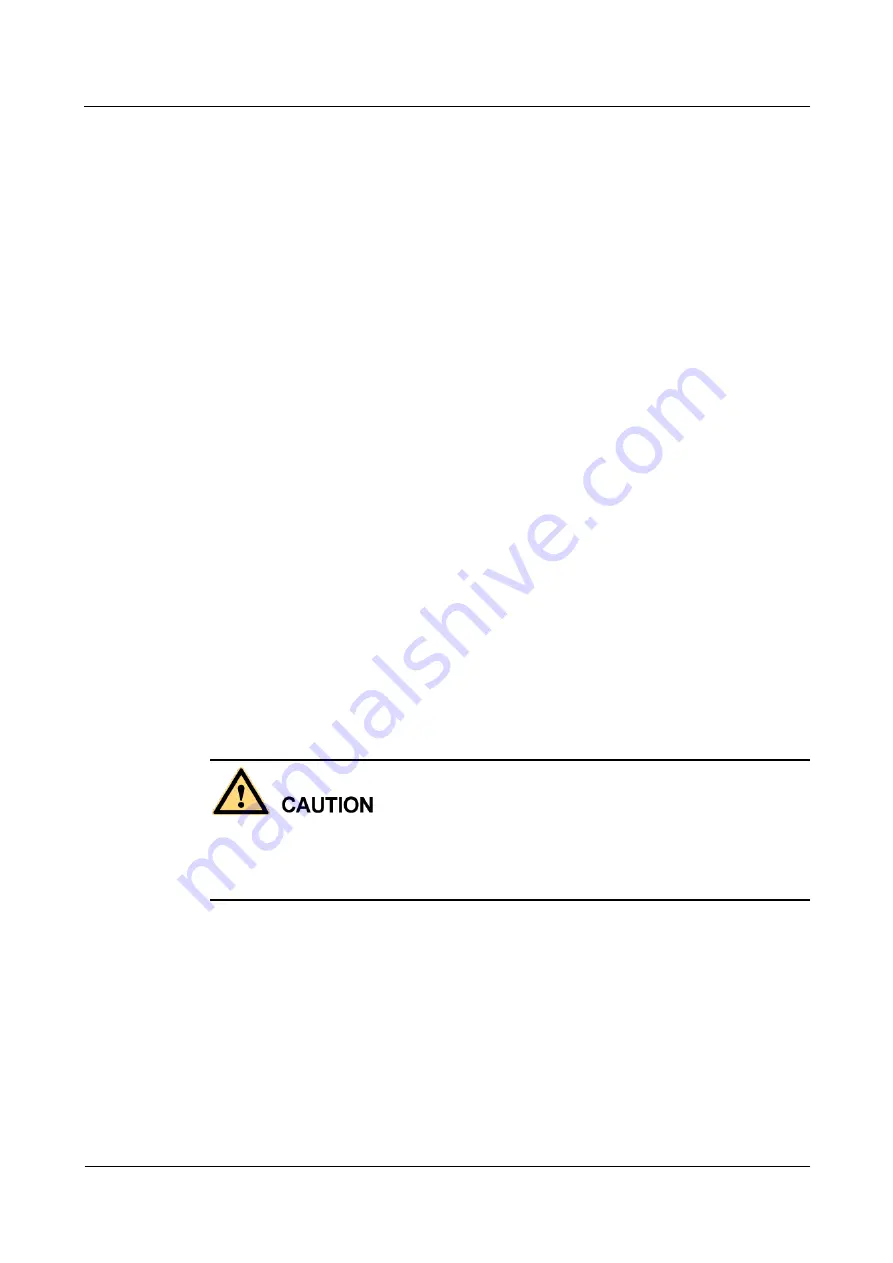
TP48200A-DT19C1 & DT19C2 & HT19C1 & HT19C2
Installation Guide
1 Safety
Issue 03 (2014-02-23)
Huawei Proprietary and Confidential
Copyright © Huawei Technologies Co., Ltd.
8
Using Ladders
Checking a Ladder
Before using a ladder, check whether the ladder is damaged. Only the ladder in good
condition can be used.
Before using a ladder, you should know the maximum weight capacity of the ladder.
Avoid overweighting the ladder.
Placing a Ladder
The recommended gradient of ladders is 75 degrees. You can measure the gradient of the
ladder with a right angle or your arms. When using a ladder, ensure that the wider feet of the
ladder are downward, or take protection measures for the ladder feet to prevent the ladder
from sliding. Ensure that the ladder is placed securely.
Climbing Up a Ladder
When climbing up a ladder, note the following:
Ensure that the center of gravity of your body does not deviate from the edges of the two
long sides.
To minimize the risk of falling, hold your balance on the ladder before any operation.
Do not climb higher than the fourth rung of the ladder (counted from up to down).
If you want to climb up a roof, ensure that the ladder top is at least one meter higher than
the roof.
1.1.6 Mechanical Safety
Drilling Holes
Do not drill the cabinet at will. Drilling holes without complying with the requirements affects
the electromagnetic shielding performance of the cabinet and damages the cables inside the
cabinet. In addition, if the scraps caused by drilling enter the cabinet, the printed circuit
boards (PCBs) may be short circuited.
Before you drill a hole in the cabinet, wear insulated gloves and remove the internal
cables from the cabinet.
Wear an eye protector when drilling holes. This is to prevent your eyes from being
injured by the splashing metal scraps.
Ensure that the scraps caused by drilling do not enter the cabinet.
Drilling holes without complying with the requirements affects the electromagnetic
shielding performance of the cabinet.
After drilling, clean the metal scraps immediately.


